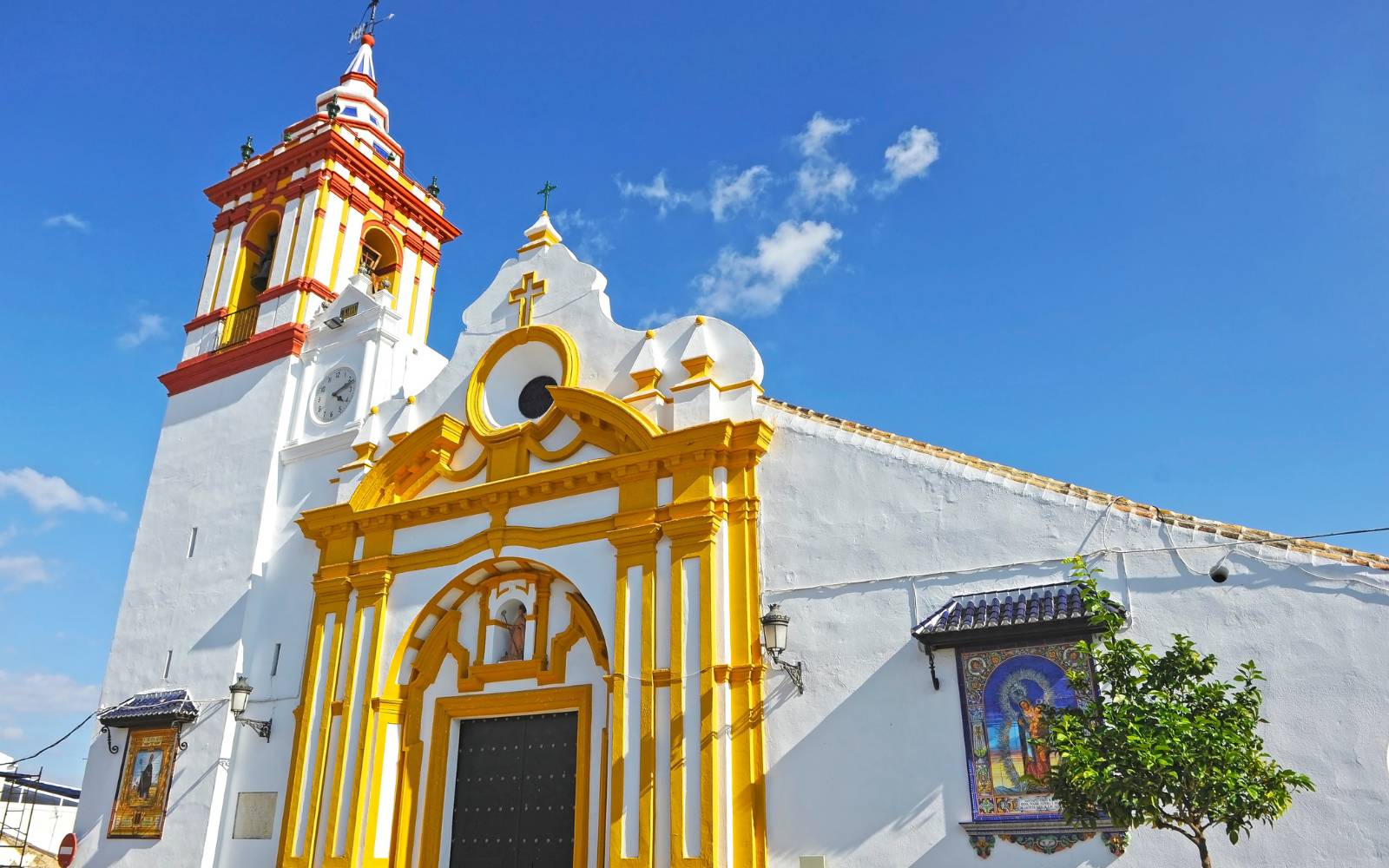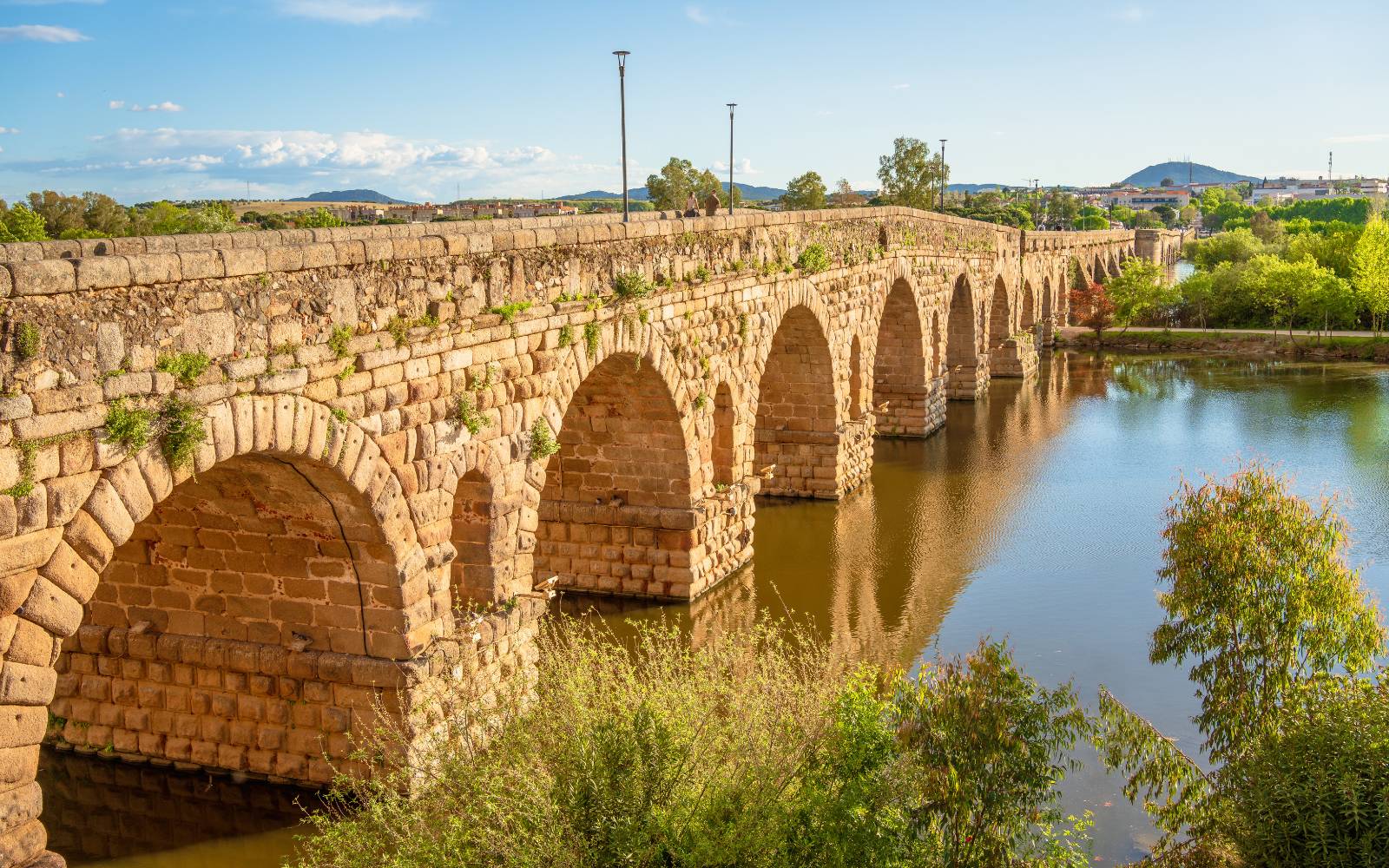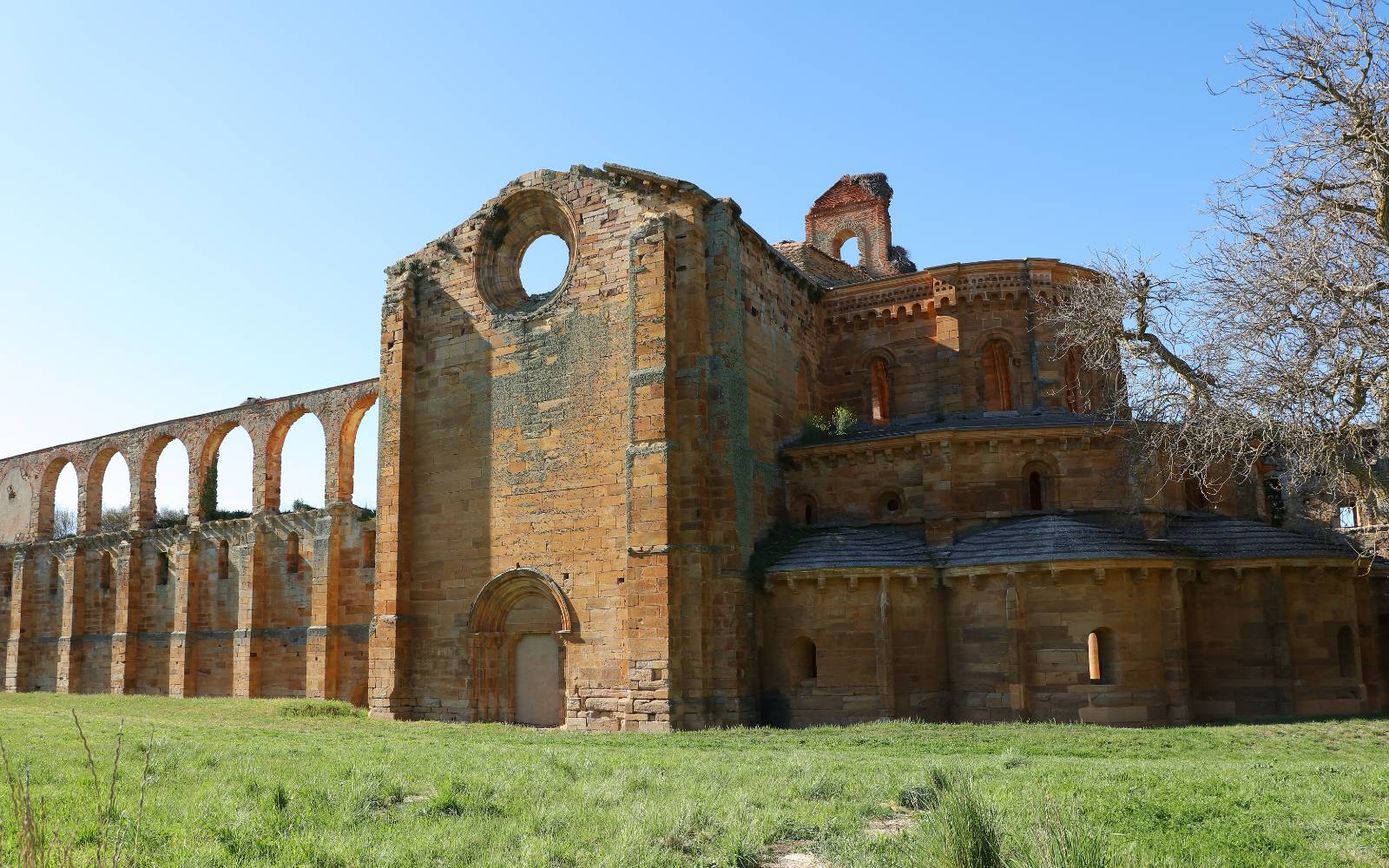Salamanca
‹ Back to the stage
Salamanca
- Residents: 155.921 aprox.
- Province: Salamanca
Information
Get to know Salamanca
Salamanca is the next big city the pilgrim will encounter. Once arrived, they will have at their disposal all kinds of services they may need.
It should be recommended that every pilgrim should reserve time to visit the impressive historic center of the historic city of Salamanca.
Salamanca is the next major city that the pilgrim will encounter.
Location
How to get there
The city of Salamanca is very well connected. The A-50, A-62 and A-66 highways reach the city, as well as national roads such as the N-501, N-620 or N-630 and secondary roads.
It also has a bus station, which has numerous lines that connect the city with nearby towns, major cities and even has lines to France.
The railway station connects the city with many Spanish points, such as: Madrid, Barcelona, Valladolid, Burgos, Zaragoza, Bilbao and foreign cities such as Irun, Porto and Lisbon.
<pSalamanca also has an airport 17 km from the city center, currently only offers charter flights and flights to Palma de Mallorca.
Salamanca airport is located in the city center.
History / Culture
What to see
Torre del Clavero
This defensive tower of Gothic style, was erected around the fifteenth century in order to be part of the Palace of Don Francisco de Sotomayor. He served as Calvero Mayor of the Order of Calatrava, a task consisting of carrying the nails of the cross of Jesus Christ in the processions.
Its construction sits on a quadrangular base, although the upper area of the same has an octagonal plan and other small turrets arranged on each side.

Puente Romano
The Roman Bridge of Salamanca spans the waters of the Tormes River, presenting itself as one of the best preserved of the Silver Route.
The Roman Bridge of Salamanca is one of the best preserved bridges of the Silver Route.
Although the author of this bridge is unknown, experts say it could have been the emperor Trajan himself. It is a construction of great strength and, until just over a century ago, was identified as the only bridge over the Tormes River.

Plaza Mayor
Declared a National Monument in 1935 and a Historic-Artistic Monument in 1973, the Plaza Mayor of Salamanca was built over two decades of the eighteenth century, following a churrigueresque style.

Plaza de Monterrey
It was built throughout the sixteenth century and is represented as the most famous and copied civil construction of Renaissance style in Spain and Latin America. This project was carried out under the designs of Don Alonso de Zúñiga y Acevedo, third count of Monterrey, following the projects of Rodrigo Gil de Hontañón. Its main function was to serve as a residence following the canons of the Italian style.

Palacio de la Salina
Also known by the name of Palacio Fonseca, erected under the mandate of Rodrigo de Messía, husband of Doña Mayor de Fonseca y Toledo. This property was later inherited by his second son, Juan de Fonseca.
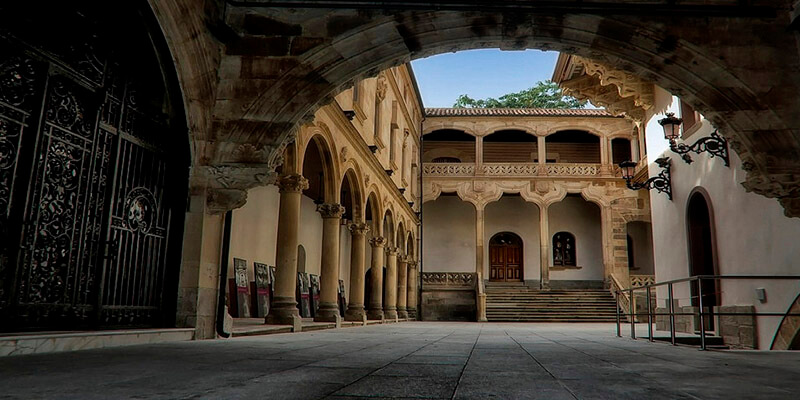
Palacio de Anaya
Also known by the name of Colegio Mayor de San Bartolomé, this neoclassical building was built in 1760 by order of Diego de Anaya y Maldonado.
Today it houses the Faculty of Philology of the University of Salamanca. Its exterior features four Ionic columns flanking the façade, which ends with a triangular pediment and a large staircase of access.
<p
Museo de Salamanca
Also known as the Provincial Museum or Museum of Fine Arts, it is located since 1948 in the House of Alvarez Abarca, in Patio de Escuelas street. This museum was created with the purpose of housing collections of archaeology, fine arts and ethnography, being divided into three sections. The Fine Arts section is the most extensive, while the archaeological and ethnographic sections are renewed with some assiduity.

Museo Catedralicio
The Chapter Rooms of the cloister of the Old Cathedral and the Chapel of Santa Catalina have housed the Cathedral Museum of Salamanca since 1953. This cultural center was created with the purpose of gathering in a single space all the art specimens that were in the two cathedrals of the city.

La Clerecía
Also known as the Royal College of the Society of Jesus, its construction began in 1617 by the architect Juan Gomez de Mora, delaying the works about 150 years. Its main function was to house the Jesuit school, but since 1940 it has been the seat of the Pontifical University of Salamanca. As for its structure, it is divided into three parts: the church, the college and the residence.

Iglesia de Santo Tomás Cantuariense
It is a temple of the twelfth century that follows the prevailing Romanesque style of that time. It stands out for the austerity of its forms and for being the first church dedicated to St. Thomas Beckett outside Great Britain. It is also famous for having hosted the playwright Lucas Fernandez, born in the city of Salamanca and author of the seven Farsas and eclogues in the pastoral style.
MASS HOURS
From 1 October to 31 May Holidays at 18:00 From 1 June to 30 September Holidays at 11:00
INFORMATION OF INTEREST
From 1 October to 30 September
Telephone: 923 217 106

Iglesia de San Martín
It is a church built around 1103 in Salamanca Romanesque style. Its interior is divided into three naves, the central one the widest covered with barrel vault while the lateral ones are covered with groin vault.
It is a church built around 1103 in Salamanca Romanesque style.

Iglesia de San Marcos
It is a Romanesque style church built around the twelfth century with a completely circular floor plan and divided into three naves, the central one the widest, topped by stepped semicircular apses. From its exterior highlights the belfry also Baroque style and inside the Gothic paintings depicting scenes from the life of the Virgin.
MASS TIMETABLE
.From September 1 to June 30 Weekdays at 09:30, 13:00 and at 20:30 Vespers at 19:30 and 20:30 Holidays at 09:30, 11:15, 12:30, 13:30, 19:30 and 20:30
INFORMATION OF INTEREST
Telephone: 923 212 525

Iglesia de San Julián y Santa Basilisa
It is a church built in the early twelfth century, in Romanesque style and which underwent numerous transformations over time. It stands out for housing inside the tomb of Doctor Francisco Ramos del Manzano, who enjoyed great importance as a jurist in the city as well as being a professor at the University of Salamanca and preceptor of Carlos II.

Iglesia de San Benito
Built in 1104 following the prevailing style of the time, Romanesque, it was later rebuilt by order of Archbishop Fonseca, who was baptized in this same place. Its interior is notable for its Gothic façade, the main altarpiece and the Calvary, from the 16th century. Its name comes from one of the sides of nobles who clashed for years to gain power in Salamanca.
HOURS
From October 1 to June 30 Holidays at 11:30, 17:45 and 21:00 2nd and 4th Sundays of the month at 17:45

Murallas de Salamanca
The two walled enclosures that surrounded the city of Salamanca have several nerve centers because, while the first had as its center the Old Cathedral, the second enclosure concerns the Consistory. Since the late nineteenth century, the old wall has been disappearing because of the inevitable expansion of the city.

Fonda Veracruz
It is a somewhat unique building whose purpose was to provide a catering and hospitality service until the mid-twentieth century. It currently houses the School of Hotel Management of Salamanca. It stands out for its entrance courtyard, surrounded by arcades and two staircases that flank the tower through which it is accessed. Today, a multitude of ivy cover the entire facade, giving it that special look.
INFORMATION OF INTEREST
Telephone: 923 270 314

Edificio Histórico de la Universidad de Salamanca
Salamanca is the oldest university center in the country and one of the oldest in Europe.
The facade of this historic building, with a marked Gothic style, was carved directly on the stone.

Cueva de Salamanca
The cave of Salamanca corresponds to the crypt of the now disappeared temple of San Cebrián, demolished in the sixteenth century. It is located next to the Tower of the Marquis of Villena, which hides a shocking legend.

Convento de San Esteban
Also known as the Convent of the Dominicans because it belonged to that religious order, it was built during the 13th century but was later irretrievably destroyed.
The convent is also known as the Convent of the Dominicans because it belonged to that religious order.

Convento de las Dueñas
Also known by the name of the Dominicans, belonging to the Order of St. Dominic, was erected in 1419 with a Mudejar style. Over the years it underwent several renovations, substantially modifying several parts of this building. Unfortunately few are the original elements that are preserved today, being able to appreciate an amalgam of Renaissance, Gothic and Plateresque styles.

Convento de la Anunciación
Also known by the name of the Convent of the Ursulas, it has been in operation since the beginning of the 16th century. It enjoys great importance in the city as it serves as the eternal resting place of the Archbishop of Fonseca, its founder. It is a building that mixes Gothic and Renaissance styles. In addition, under the choir of the church we will find a small but well-kept museum.

Colegio de Calatrava
Also known as the College of the Immaculate Conception, it was built in the eighteenth century by the Order of Calatrava, to which it owes its name. Particularly noteworthy is the chapel that housed several original paintings by Francisco de Goya, such as the painting of the Immaculate Conception, until the sacking of the French, a stage in which it disappeared. Between 2000 and 2003 a major renovation had to be carried out in order to concentrate in one place all the needs of the Diocese.

Centro Documental de la Memoria Histórica
Located in Gibraltar Street, this museum was founded thanks to the General Archive of the Spanish Civil War. Its main purpose is to preserve the documentation and that it serves as an aid for research and dissemination. This Center, also known by the people of Salamanca by the name of “the Archive”. It served in times of the Spanish Civil War as the headquarters of the Franquist Headquarters, being an indispensable center for the fascist side to store all the documentation and thus identify people with ideology not related to the Regime.

Catedral Vieja
It is one of the most recognized monuments of the Spanish Romanesque. His works began in the year 1140 lengthening something more than a century. Its structure is divided into three naves covered by ribbed vaults, a transept also covered by a ribbed dome (called Torre del Gallo) and three semicircular apses. In its interior the medieval sculptures that decorate the capitals and the tombs of the thirteenth and fourteenth centuries stand out. The most outstanding feature of its interior is the main altarpiece formed by different mural paintings from the mid-fifteenth century depicting the life of Christ and in the center houses an image of the Virgen de la Vega, considered the patron saint of the city.

Catedral Nueva
It is one of the most important cathedrals of Salamanca. It was built with the aim of replacing the Old Cathedral, which was beginning to become too small. The works began in 1512 on account of the architect Rodrigo Gil de Hontañón, but these were not completed until 1733.

Casa-Museo de Unamuno
If we go to Libreros Street in Salamanca we can visit the house where the writer Miguel de Unamuno lived during the time he spent as rector of the University of Salamanca. Currently the space available has been conditioned to expose and disseminate the work and personal effects of this great writer. Specifically we will be able to appreciate his more than 6000 books, analyze the personal documentation of the author and even some of his friends and colleagues.

Iglesia de la Purísima
Annexed to the Convent of the Augustinian Nuns, this church was built during the 17th century by order of the Count of Monterrey as a gift to his daughter, who belonged to the Order of the Augustinian Nuns.
It is a very austere baroque style building, which stands out for housing in its interior several works by the artist José de Ribera. The most famous is the one representing the Purisima, considered one of the best paintings dedicated to the Virgin. It also contains the tombs of its founders in the main altar and in the pulpit, all built with Italian marble.
MASS TIMETABLE
From October 1 to June 30 Weekdays and vespers at 7:00 pm Holidays at 12:30 pmFrom July 1 to September 30 Weekdays and vespers at 8:00 pm
From October 1 to June 30 Weekdays and vespers at 8:00 pm
From July 1 to September 30 Weekdays and vespers at 8:00 pm
<pINFORMATION OF INTEREST
Web: www.lapurisimasalamanca.esTeléfono: 923 212 738

Casa Lis
It is a building built on the old wall in 1905 by the architect Joaquín Vargas Aguirre. It is considered one of the most famous monuments of the city as the south facade is a clear example of modernist art, noted for its colorful stained glass windows and that provide a great luminosity to the whole house. Since 1995 the Museum of Art Noevau and Art Dèco is located here, which has 19 collections of art objects collected by Manuel Ramos Andrade.
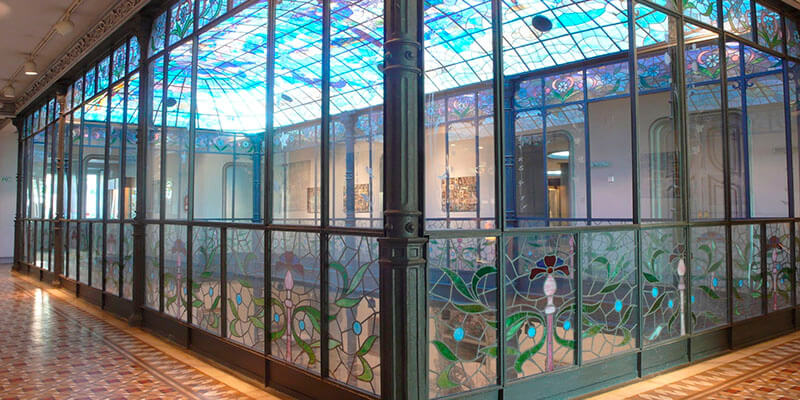
Casa de las Conchas
It is a large palace-style house erected in the time of the Catholic Monarchs by Rodrigo Arias Maldonado. It is one of the most relevant buildings of the whole place, differentiating itself from the rest by its more than 300 shells embedded in the facade, following a rhomboidal composition. There is a legend that assures that under one of these shells hides a legendary gold coin.

Information of interest
Local police
923 194 433
Civil guard
923 475 500
Fire department
923 232 336
Civil protection
923 759 000
Town hall
923 531 137
Health center
923 255 994 / 923 126 591
Tourism office
923 218 342
Plaza Mayor, 32

We send you your itinerary
Enter your details and receive your travel itinerary by email
Recommended
Gastronomy
Recommended
Festivals and Pilgrimages
Local festivity
5 de febrero: Fiesta de las Águedas
Local festivity
Semana Santa: Declarada de Interés Turístico
Local festivity
Siguiente lunes al lunes de Pascua: El lunes de aguas
Local festivity
Del 1 al 15 de junio: El festival internacional de las Artes de Castilla y León
Local festivity
8 de septiembre: Virgen de la Vega
Local festivity
12 de junio: Fiesta de San Juan de Sahagún
Local festivity
31 de octubre: Fiesta de ascensión del Mariquelo
Local festivity
15 de diciembre: Nochevieja universitaria
The Silver Route
On foot
38 stages



